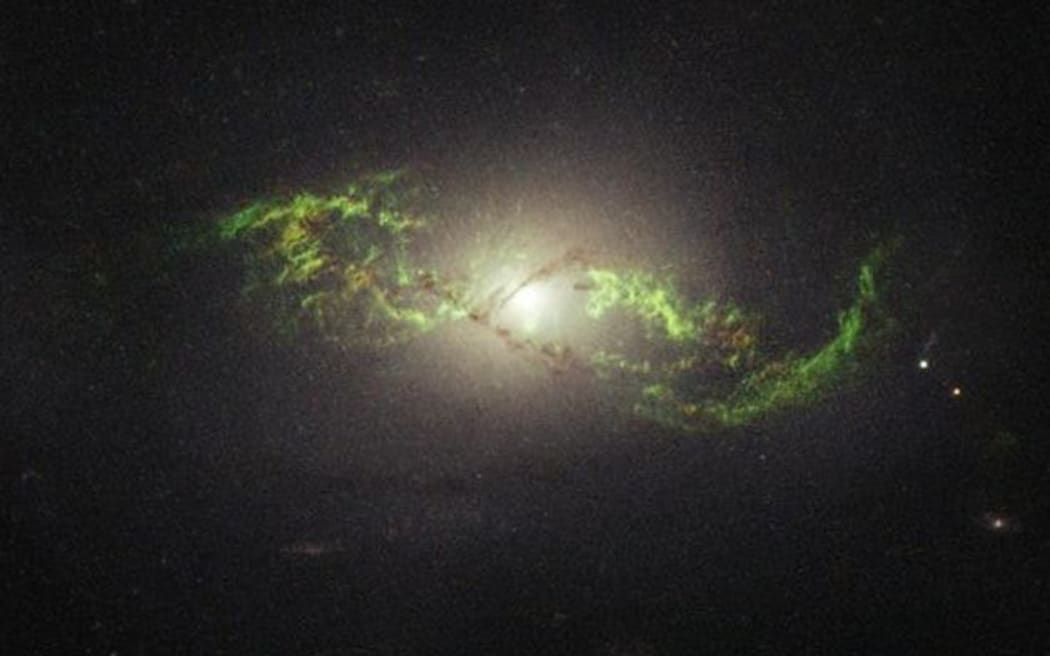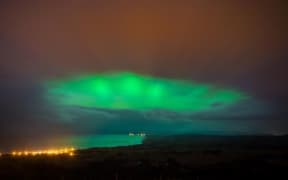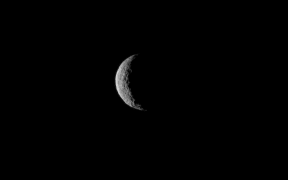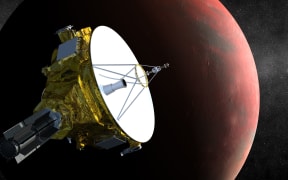NASA's Hubble space telescope has captured images of wispy, green objects that are the ghosts of quasars that flickered to life and then faded.

Photo: NASA / ESA / W. Keel (University of Alabama, Tuscaloosa)
The glowing structures offer insights into the puzzling behaviour of galaxies with energetic cores, according to Bill Keel of the University of Alabama, Tuscaloosa, who initiated the Hubble survey.
The images reveal a set of looping, spiral, and braided shapes around eight active galaxies. The galaxies host a bright quasar that may have illuminated the structures.
The wisps outside the host galaxy are believed to have been illuminated by powerful ultraviolet radiation from a supermassive black hole at the core of the host galaxy, NASA says.
The most active of these galaxy cores are called quasars, where in-falling material is heated to a point where a brilliant searchlight shines into deep space. The beam is produced by a disk of glowing, superheated gas encircling the black hole.
"However, the quasars are not bright enough now to account for what we're seeing; this is a record of something that happened in the past," said Professor Keel.
"The glowing filaments are telling us that the quasars were once emitting more energy, or they are changing very rapidly, which they were not supposed to do."

Photo: NASA / ESA / W. Keel (University of Alabama, Tuscaloosa)
One possible explanation was that pairs of co-orbiting black holes are powering the quasars, and this could change their brightness, like using the dimmer switch on lights.
The green filaments are believed to be long tails of gas pulled apart under gravitational forces resulting from a merger of two galaxies. The immense structures, tens of thousands of light-years long, are slowly orbiting their host galaxy long after the merger was completed.
The ghostly structures are so far outside the galaxy that they may not light up until tens of thousands of years after the quasar outburst.
The first "green goblin" type of object was found in 2007 by Dutch schoolteacher Hanny van Arkel, who discovered the structure in the online Galaxy Zoo project.





